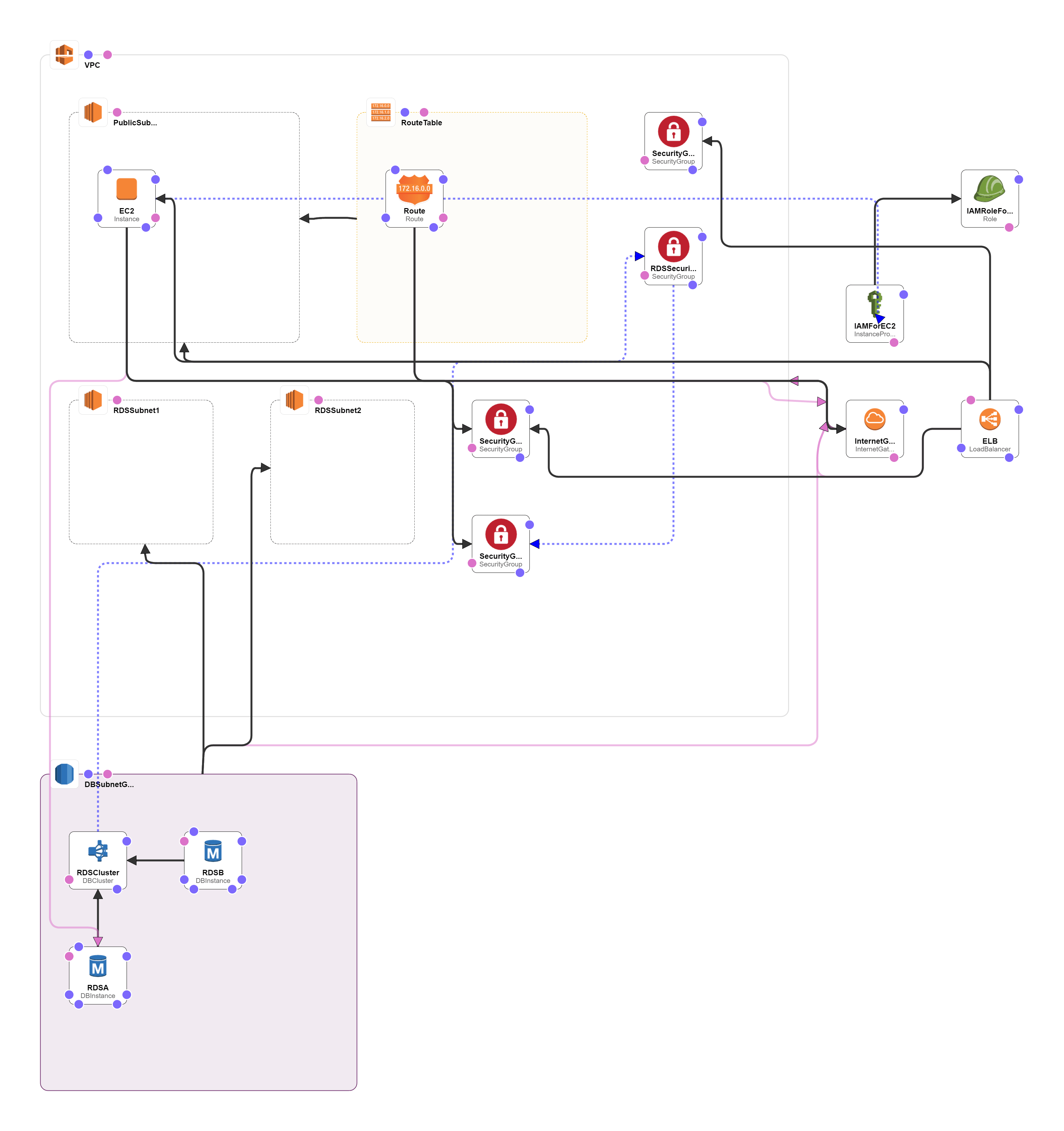Overview
Magento is a podium built on open source technology which provides online merchants with supple shopping cart system, as well as control over the look, content and functionality of their online store. Magento offers powerful marketing, search engine optimization, and catalog-management tools. Common Places uses the community-based Magento product for our ecommerce clients. Magento’s capability to scale permits shops with only a few products and simple needs to easily expand to tens of thousands of products and complex custom behavior without changing platforms. It offers a variety of plug-ins and themes which can easily improve a customer’s experience. There are a lot of aspects to the online store which need to be configured, and how well that is skillful is often dependent on business insight.
Magento opensource vs. Magento commerce
The difference between Magento Commerce and Magento Opensource is given below:
- Magento Opensource: Previously known as Magento Community, Magento Opensource, the free version of Magento that can be downloaded, customized, and self-hosted.
- Magento Commerce: Previously, Magento Commerce came in two versions, Magento Enterprise and Magento Enterprise Cloud. Those two versions have been unified, leaving us with Magento Commerce, a premium version of Magento Opensource that includes cloud-hosting as part of the subscription fee.
Magento Opensource is available for everyone to download free of charge. It’s an open source platform that is free to use and you’re able to extend and configure the platform as you please. Also, Opensource users have access to a vast range of extensions and themes and are supported by a growing community.
Disadvantages of Magento as an eCommerce platform:
1. Ongoing costs Magento regularly rolls out patches and security updates which needs to be manually installed. And believe me, the manual installation process is not as straightforward as you like it to be. You’re better off getting support to help you manage and install the updates, but this would come at a cost. You would need to hire Magento specialists or refer to official Magento support, which does not come cheap.
2. Needy technology If you’re using Magento Commerce edition, you’ll find that it’s based on an old approach of “download and customize”. Not only does that take time, but it also takes technical knowledge .This approach from Magento also saps your attention and energy away from the activities that will help you scale your business. Instead, you will be forced to worry about managing the technology and running updates as and when required.
3. The support sinkhole Magento has 1,300 open and ongoing support tickets. So if you run into issues, you may be waiting in line for fairly some time before you find a solution. If you want to bypass official Magento support your ongoing support costs will rise even further, as sovereign Magento support specialists charge substantial fees.
- Magento is just an eCommerce solution Magento is a planetary eCommerce platform, but that’s pretty much all it is. But in today’s eCommerce climate, to even stand a slim chance against the eCommerce goliaths like Amazon, you need so much more than just an eCommerce platform. The modern consumer isn’t satisfied with just a product page and some on-site reviews. They want content in abundance before they even consider a purchase. They want walkthroughs, unboxing videos, documentation, third-party reviews, and more.
5. Updates and migrations
Running Magento undergo an endless cycle of updates and running these maintenance procedures is not a forthright task. Also, you would ultimately have to migrate to the newest version of Magento, whenever they decide to roll that out. For example, currently, Magento 1 users are experiencing the pain of having to migrate to Magento 2.Magento 1 users have to either migrate to Magento 2 or replatform completely, as it was announced that Magento would not be providing support for Magento 1 after June 2022As you can imagine, the migration process isn’t easy or inexpensive. Many developers who have migrated to Magento 2 have commented on the difficulty of the move, as many Magento 1 themes and extensions are incompatible with Magento 2.
6. It’s open source
As an open source platform, Magento gives users the ability to customize the code in any way they like. That may sound great at first, but when you consider issue #5 mentioned previously, having a highly-customized, bespoke back-end will make your life even more difficult when it comes to inevitably migration or replatforming. Also if you stray too far away from commonly used theme and extensions that aren’t peer-reviewed or tested for usability, you’ll risk breaking your entire eCommerce environment. If you opt for a closed source enterprise eCommerce solution, you can still build a custom site with the help of the software vendor or an agency, but it will be done within the limits of the software, avoiding breakage and future headaches. Plus, closed source platforms have a much healthier track record when it comes to security.
7. Magento isn’t built for the IoT era
Magento Commerce has APIs to help deliver content to a wide range of channels, but as previously mentioned, Magento is just an eCommerce solution — it was never meant to manage a brand’s omnichannel strategy across all touchpoints. So, at best, you’ll get an inconsistent experience because you’ll have to draft in additional technology to plug the gaps left by Magento. Hardly ideal when brands like Amazon are providing seamlessly enjoyable shopping experiences.
—
Magento with Aurora on Linux Server
Magento on the cloud is an open source E-commerce software, created by Varien Inc., which is useful for online business. It has a flexible modular architecture and is scalable with many control options that are helpful for users. Magento uses E-commerce platform which offers organizations ultimate E-commerce solutions and extensive support network.
Due to the initial setup of this image, it may take up to 20 minutes to launch.
Magento employs the MySQL or MariaDB relational database management system which in this case is Aurora DB Engine, the PHP programming language, and elements of the Zend Framework
Features
Magento Enterprise Exclusive Features
Customer Segmentation, Targeted Promotions & Merchandising Segment customers into groups and optimize marketing initiatives by identifying specific customer groups using specific characteristics (address, location, sex, etc.) and/or value (purchase history, on-site browsing, etc.). Advanced segmentation capabilities include the ability to identify unknown site visitors. Whether they’re new visitors or returning customers who have not logged in, you’ll now be able to identify and target them with special promotions to convert browsers into buyers.
Dynamic Rule Based Product Relations Dynamically target customers to present up-sells, cross-sells, and related products based on their specific product selections. Rules are easily administered through a condition-based tool, allowing marketers to easily manage specific product suggestions, shopping cart price rules and banners to any customer segment to encourage additional purchases.
Persistent Shopping
Customers are able to shop and maintain items of interest in their shopping cart, wish lists, recently viewed and recently compared items between browsing sessions and from device to device. Once a customer logs in to a site, a long-term cookie is established for that browser/ device combination and the customer can now view the contents of their shopping cart in subsequent sessions without logging in again.
Automated Email Marketing Reminder Increase customer retention by automating email reminders to customers with abandoned shopping carts and wish lists. Email reminder campaigns are configurable and customizable for a variety of parameters including frequency, cart value, quantity and more.
Private Sales Restrict your catalog to specific customers. Create invitations and events for limited time sales to select customers and allow customer-initiated invitations.
1. Catalog Management
Whether you are selling beauty products, electronics, clothing, or accessories – your catalog is the key component for the online shop. And Magento undoubtedly offers extensive catalog management features including –
- Supports virtual products
- Allows downloading digital products – music, videos, etc
- Effortlessly edit and delete product reviews
- Complete inventory management
- Import and export products for batch update offline.
- Attribute sets for quick product creation of different item types
- Highly customizable options such as resizing and watermarking
- RSS Feeds and lots more
- Tools for Advertising and Marketing
Magento not only handles your online store effortlessly but also helps you with promotion, marketing, and conversion. It offers numerous tools to make your advertising easier. These tools include –
- Cross-sell products
- Promotional pricing restricted to selected products or categories
- Option to distribute coupon codes across email, newsletter and offline.
- Monitor coupon usage, manage newsletters and polls
- Offers free shipping and promote new products list.
- Allows price variation based on quantity and groups
- Landing page tools for PPC, new product promotional tools, URL tools,
#3. Fully SEO Centred
Magento features include a list of options to make search engine optimization smoothly for your online store/website. Magento SEO features –
- Generates Google Sitemaps
- Automatically sort popular searches and modifies
- Supports Search Engine Friendly URLs
- Easy to Meta-tag products and information
- Faster loading options such as less usage of minimizes .css and .js files
#4. Mobile Friendly Commerce
This is one of the coolest Magento features, wherein it allows browsing full site store catalogue or selected products particularly personalized for mobile users.
- Mobile HTML5 technology for creating online mobile friendly storefront
- Open for iPhone, Android, and Mobile Opera browsers
- Clear and user-friendly product display
- Supports media files such as audio and video
- Swipe, zoom, and multi-touch
- Drag and drop and more
#5. Order Management
Magento eCommerce development platform offers unparallel order management system. Users have lot options including –
- Viewing, creating, editing and fulfilling orders directly from admin panel
- Complete Call center support product configuration and change
- Allows creating one or more invoices, shipments and credit memos per orders
- Helps to print invoices, packing slips and shipping labels
- Email notification, RSS feed for fresh orders and more
#6. Complete Site Management
Magento being a great eCommerce web design company understands the importance of complete site management. In fact, it allows users to control multiple website and store within a single installation.
- Control sites from admin panel and share only required information
- Templates with fully customizable design
- Multiple language options and currencies
- Integration between Magento and third-party apps
- Tax rates based on location, product type, and group
- Captcha enabled websites and more
#7. Checkout, Shipping, and Payment
Shipping and payment are the biggest concern for users when choosing the best platform for the shopping cart. Magento brilliantly incorporates a plethora of alternatives for payment and shipping options.
- One-page checkout
- Ship to multiple orders in one order
- Complete SSL security support for front-end/back-end orders
- Estimates for shopping cart tax and shipping costs
- Integration with Paypal and Authorize.net
- Flat rate shipping, Free Shipping and Order tracking and more
#8. User Account
It’s pretty easy to manage user account with lots of capabilities and options.
- Simple to understand account dashboard
- Recent orders, history, and status
- Store unlimited address
- Save wish list with comments
- Newsletter subscription management
#9. Customer Service and International Support
Magento eCommerce development platform comprises of great back-end tools and community for customer support.
- Contact Us form
- Support for local and international currencies and tax rates
- Order tracking, history, and email updates
- Option for International site registration, shipping destination, and payment
- EU cookie notification and more
#10. Tracking, Analytics, and Reporting
Magento features include numerous options for tracking, analyzing and reporting.
- Google Analytics
- Sales and tax reports
- Abandoned shopping cart and low stock report
- Total sales and refunded invoice
- Product review report and more
Major Features Of Magento
- Marketing Promotions and Tools
- Analytic and Reporting
- Search Engine Optimization
- Site Management
- Catalog Management
- Catalog Browsing
- Product Browsing
- Mobile Commerce
- International Support
- Checkout
- Shipping
- Payment
- Customer Service
- Customer Accounts
- Order Management
AWS Template
Magento with Aurora (RDS) and AWS Elastic Load Balancer on Linux Server
Installation Instructions for AWS Template for Magento on Aurora – RDS
Note: Please do not choose Single Ami option for First time.
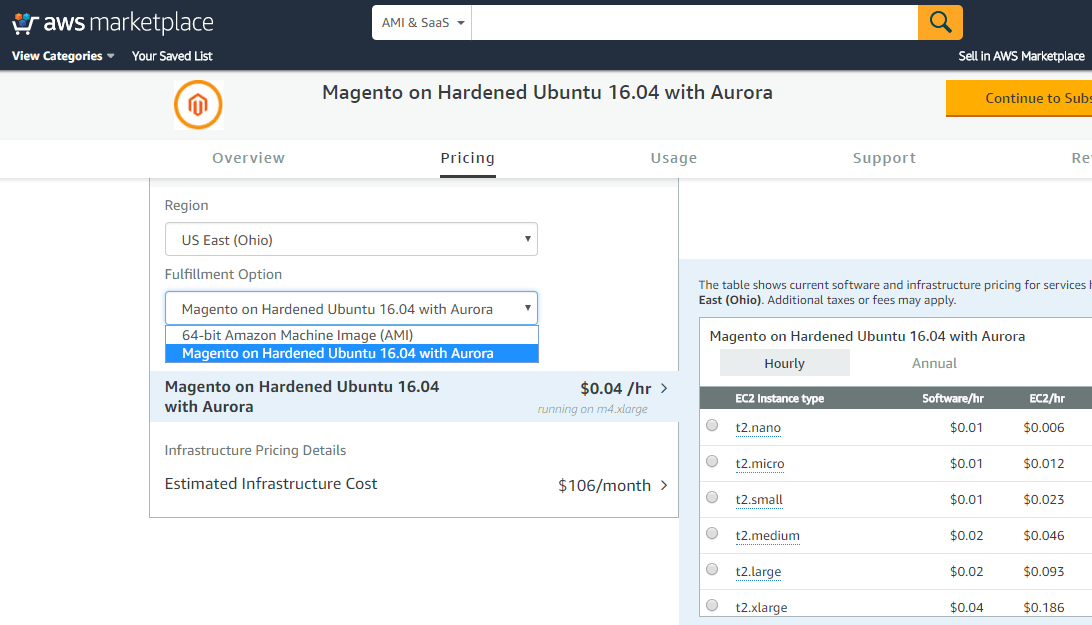 A) Application URL: Template Output provides the Application URL as well as Database details.
A) Application URL: Template Output provides the Application URL as well as Database details.
Access the application via a browser at the load balancer URL which is the Website URL from the template output.
 B) RDS Cluster / Aurora Details:
B) RDS Cluster / Aurora Details:
RDS Cluster / Aurora Details can be obtained from the Output of the template.
Being your installation with the website URL from the Output and enter custom details for your site
Please enter the RDS Cluster / Aurora details in the configuration of Database stage.
Details are also available in
/root/aurora_credentials.txt in the ec2 Instance
Installation Instructions For Ubuntu
Note: How to find PublicDNS in AWS
C) SSH Connection: To connect to the deployed instance, Please follow Instructions to Connect to Ubuntu instance on AWS Cloud
1) Download Putty.
2) Connect to the virtual machine using following SSH credentials :
- Hostname: PublicDNS / IP of machine
- Port : 22
Username: To connect to the operating system, use SSH and the username is ubuntu.
Password : Please Click here to know how to get password.
D) Other Information:
1.Default installation path: “/var/www/html”
2.Default ports:
- Linux Machines: SSH Port – 22
- Http: 80
- Https: 443
Important: During the setup enter the Database Server Host as the RDS Cluster from the Template output.
Database Name , Username and Password can also be referenced from the template output which is same as input during Template deployment
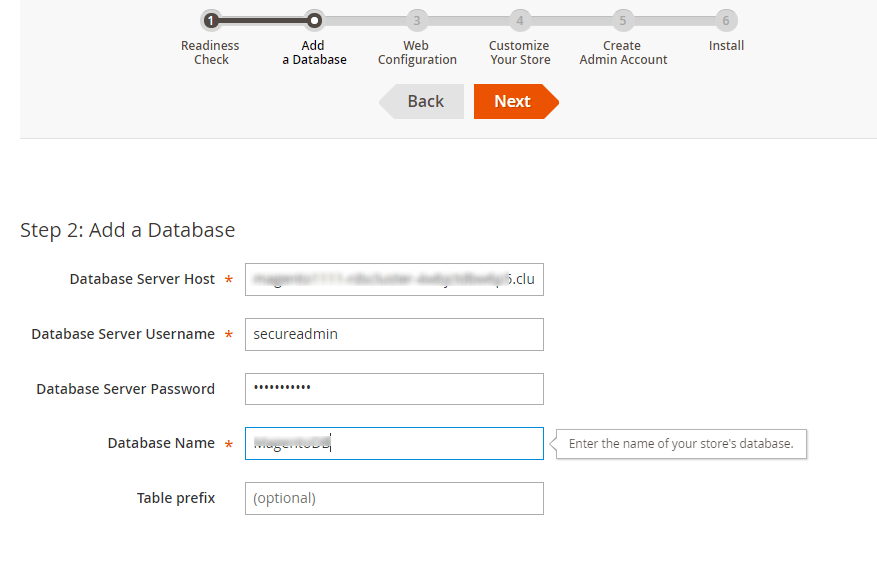
Take a note of the admin URL and customize it as required
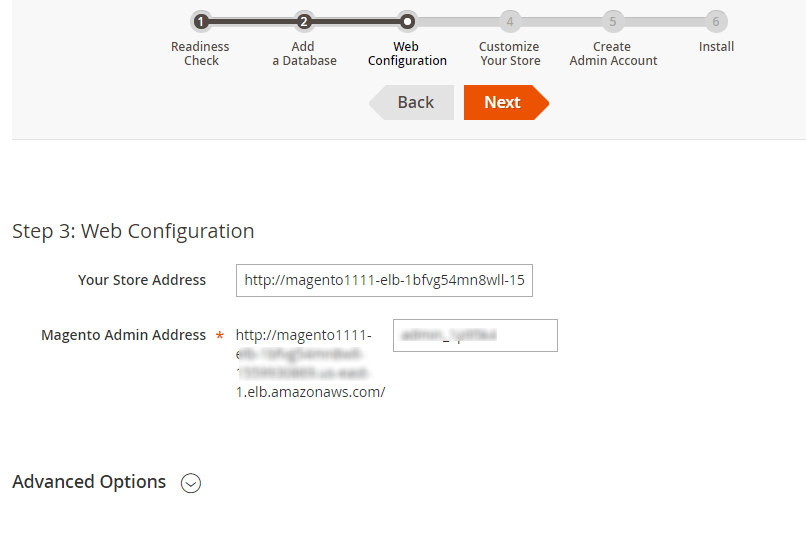
Take a note of the summary information.
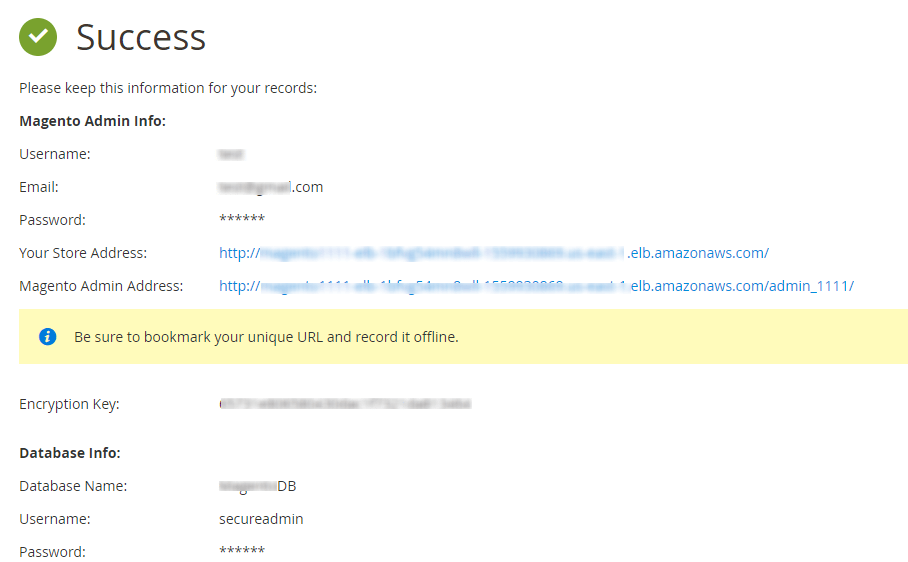
Once complete the site admin portal should look like below screen
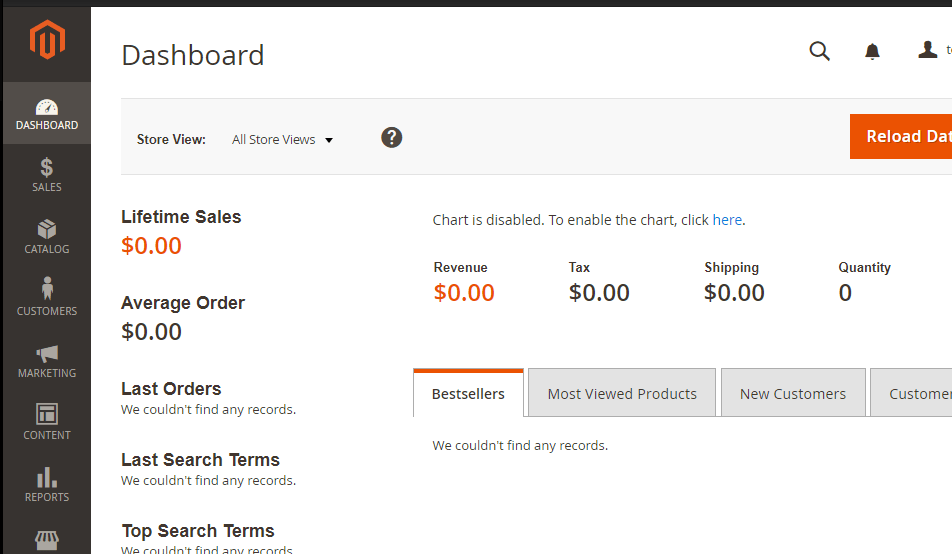
You can continue further customizations from site configuration in the Admin portal.
Magento Aurora Template Topology


